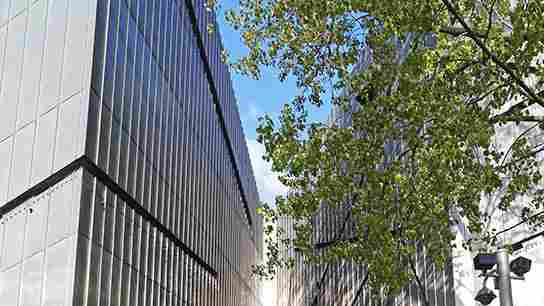You can’t ask for a more modern and vibrant cultural mecca than Berlin, but what impresses me most about the city is that it does not turn its back on the past. Its complex history is visible in nearly every element of the contemporary metropolis, from politics to art to architecture. One of the most poignant examples of the latter is the Jewish Museum Berlin, Daniel Libeskind’s nuanced, deeply moving testament to a period in time that is still hard to fathom.

Libeskind’s design, which won an international competition in 1988 (a year before the Berlin Wall came down), joined an existing Baroque building, the 1735 Kollegienhaus, with a new structure via an underground passageway. Distinctly deconstructivist in nature, the zinc-clad modern section features colliding walls, canted beams, and angled floors.
“The new design was based on three conceptions that formed the museum’s foundation,” Libeskind noted in a statement about his approach. “First, the impossibility of understanding the history of Berlin without understanding the enormous intellectual, economic, and cultural contribution made by the Jewish citizens of Berlin. Second, the necessity to integrate physically and spiritually the meaning of the Holocaust into the consciousness and memory of the city of Berlin. Third, that only through the acknowledgment and incorporation of this erasure and void of Jewish life in Berlin can the history of Berlin and Europe have a human future.”
On its own, the Jewish Museum Berlin is a manifestation of the oft-repeated phrase, “Let us not forget,” but it is also a part of the greater experience of Berlin, a vast city with a conscience.
Join me on tour of Berlin’s past and present.
